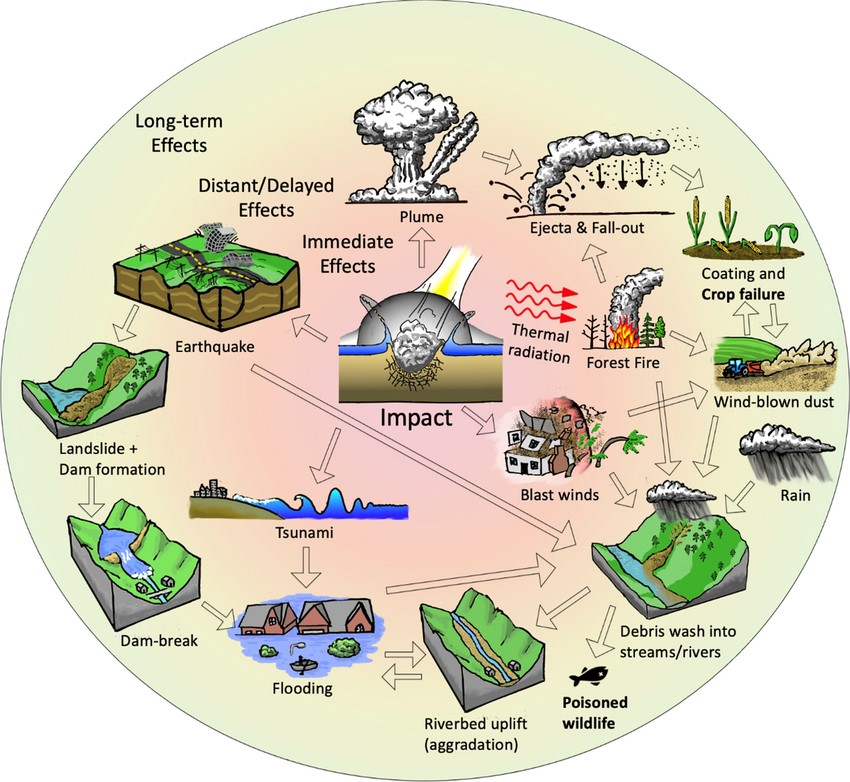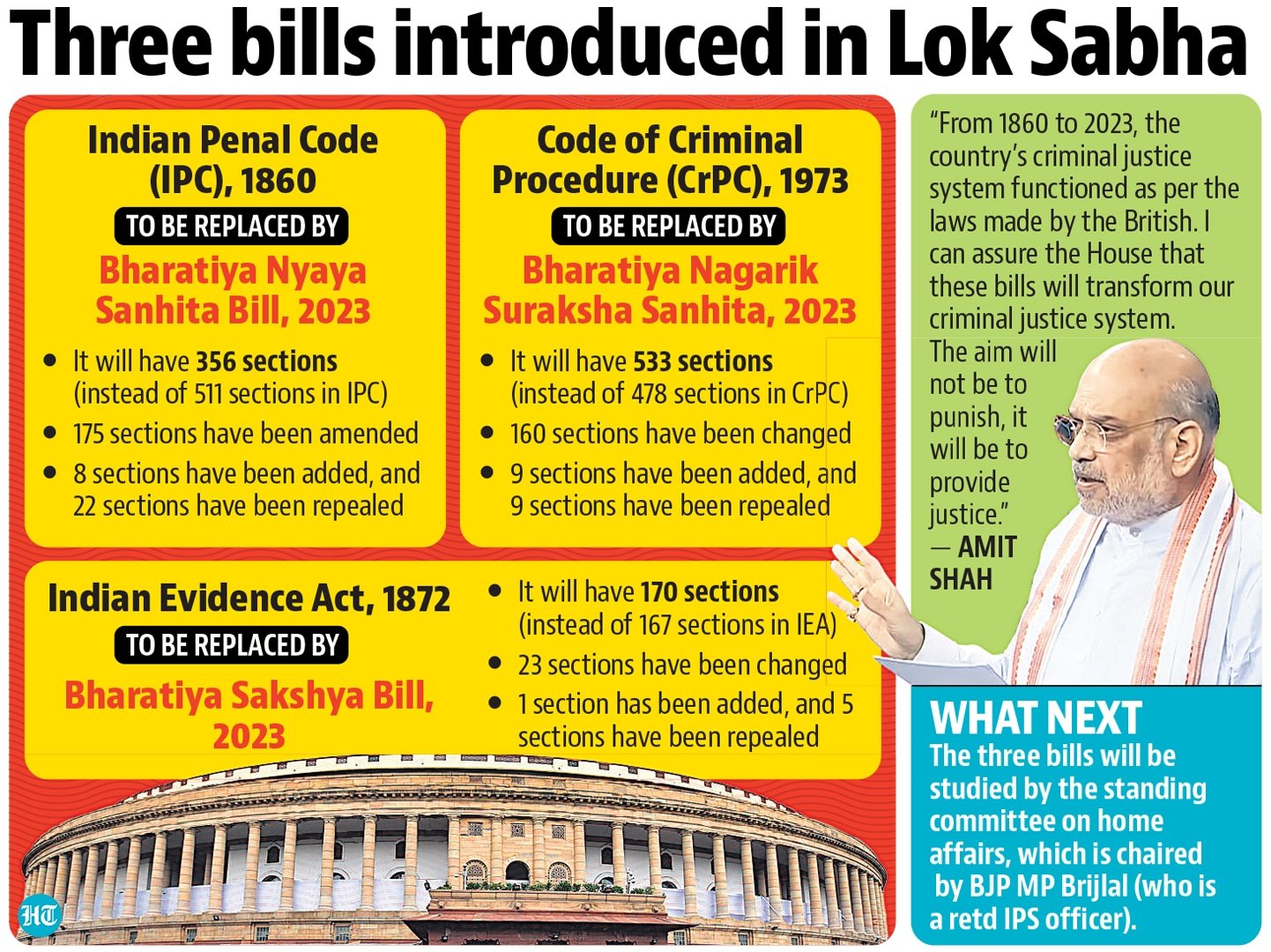
Current Affairs December 05, 2023: COP28 Declaration, International Maritime Organisation, Namami Gange Programme, Biodiversity Heritage Site
Subscribers of "Current Affairs" course can Download Daily Current Affairs in PDF/DOC
Subscribe to Never Miss an Important Update! Assured Discounts on New Products!
Must Join PMF IAS Telegram Channel & PMF IAS History Telegram Channel
{GS2 – IR – UN} International Maritime Organisation (IMO)
- Context (TH): India was re-elected to the IMO Council for the 2024-25 biennium.
- India’s re-election falls under the Category of 10 states with “the largest interest in international seaborne trade”.
- The International Maritime Organization (IMO) is a specialised agency of the United Nations.
- It was established in 1948 as the Inter-Governmental Maritime Consultative Organization (IMCO) and became the International Maritime Organisation in 1982.
- It became a specialised agency of the United Nations in 1959.
- Mandate: To promote maritime safety, security, and environmental performance. It achieves this through the development and adoption of international regulations and standards.
- Membership: 175 Member States and 3 associate members (India became a member in 1959).
- Headquarters: London.
- Funding: Contributions by member states, voluntary donations and commercial activities.
Structure of IMO
Assembly
- It is the highest governing body of the IMO, consisting of all member states.
- It meets biennially to make policy decisions, approve the budget, and set the work program.
- It elects the IMO Council.
Council
- It acts as the executive organ responsible for supervising the work of the Organization.
- It makes decisions on administrative and budgetary matters.
Committees
- It meets regularly to address specific issues and propose recommendations to the Assembly or Council.
- Eg, Maritime Safety Committee (MSC), Marine Environment Protection Committee (MEPC), Legal Committee, and Technical Cooperation Committee.
Secretariat
- The Secretariat is headed by the Secretary-General, appointed by the Assembly and implements the decisions of the Assembly, Council, and committees.
- It manages the day-to-day operations of the IMO.
{GS2 – MoJS – Schemes} Namami Gange Programme
- Context (PIB | TH): Seven years into the National Mission for Clean Ganga (NMCG), the installed sewage treatment plants can only treat 20% of the sewage of five major states along the Ganga river.
- Namami Gange Programme is an integrated conservation mission to achieve the twin objectives of:
- Effective abatement of pollution.
- Conservation and rejuvenation of the National River Ganga.
- Approved as a ‘Flagship Programme’ by the GoI in 2014, it is a centrally sponsored scheme under the Ministry of Jal Shakti (MoJS).
- It is implemented by the National Mission for Clean Ganga (NMCG) and its state counterpart organisations, i.e., State Program Management Groups (SPMGs).
Main Pillars of Namami Gange Programme
- Sewage Treatment Infrastructure
- River-Front Development
- River-Surface Cleaning
- Biodiversity Conservation
- Afforestation
- Public Awareness
- Industrial Effluent Monitoring
- Ganga Gram: The Ministry of Drinking Water and Sanitation (MoDWS) identified Gram Panchayats along the bank of Ganga in 5 states (UK, UP, Bihar, Jharkhand, & WB) to construct toilets.
National Mission for Clean Ganga (NMCG)
National Ganga Council
|
Shortcomings of National Mission for Clean Ganga
- Inadequate Sewage Treatment: For eg, every day, around three million litres of sewage is emptied into the Ganges – and only about half of that has undergoes any kind of treatment.
- Financial mismanagement and delay in disbursing funds. CAG report has highlighted that NMCG could not utilize any amount out of the Clean Ganga Fund.
- Lack of real-time and accurate data on water quality, pollution levels, and project implementation.
- Lack of holistic approach: The mission primarily focuses on addressing pollution and cleaning efforts without adequately considering the broader ecological and socio-economic aspects.
Way Forward
- Strengthening sewage treatment infrastructure, promoting decentralized wastewater treatment systems as mandated by the Namami Gange Programme.
- Instilling a sense of ownership and responsibility among the public towards the river’s conservation by roping in Ganga Praharis.
- International cooperation with Nepal and Bangladesh to address transboundary pollution.
- Timely updation of data by leveraging Ganga Knowledge Centre.
Arth Ganga
Interventions under the model
|
{GS3 – DM – Cyclones} Cyclone Management in India
- Context (TH | IE | PIB): Cyclone Michaung made landfall in the coastal districts of TN and AP.
Impact of Cyclones
- Economic Impact: WMO estimates that storms and surges cost approx 1.7% to India’s GDP.
- Damage to buildings, power lines, and trees, causing power outages and service disruption.
- Flooding and waterlogging impact standing crops, disrupting communication lines and increasing cases of waterborne diseases.
- Coastal Erosion and Saline Intrusion: For eg, Saline intrusion in the Sundarbans region due to Cyclone Bulbul.
- Environmental Consequences: Release of hazardous substances, including oil spills, chemical leaks, and sewage overflow, impacting ecosystems, contaminating water sources, and affecting human health
Cyclone Disaster Management Framework in India
Monitoring and Prediction
- IMD monitors and forecasts cyclones using satellite, radar and synoptic observations.
- It issues warnings and advisories to the public and authorities about cyclones’ location, intensity and impact.
Risk Mitigation
- National Disaster Management Agency is the nodal agency for disaster management in India.
- It prepares national guidelines on the management of cyclones and implements the National Cyclone Risk Mitigation Project (NCRMP) to improve the infrastructure and capacity of the coastal states.
Response and Relief
- The Ministry of Home Affairs coordinates the response and relief operations during and after a cyclone.
- It mobilizes NDRF, Indian Coast Guard, armed forces and other agencies to assist the state governments in rescue, evacuation, medical aid, food distribution and restoration of essential services.
- It also provides financial assistance to the affected states from the National Disaster Response Fund (NDRF) or the State Disaster Response Fund (SDRF).
Colour Coding Warning by IMD
|
Challenges with Cyclone Management in India
- Delay in early warning systems
- Inadequate infrastructure: Lack of sturdy and cyclone-resistant infrastructure, cyclone shelters & congestion during evacuation affect the overall process.
- Lack of coordination among different levels of government, departments, agencies, civil society organisations, private sector and international partners.
- Focus on management and evacuation than on prevention.
- Challenges in providing timely relief supplies, rebuilding damaged infrastructure, and ensuring access to essential services.
Way Forward
- Strengthen early warning systems by implementing IMD’s Cyclone Warning Dissemination Systems, strengthening forecasting models to improve lead time for cyclone alerts.
- Engineered structures like cyclone-resistant houses, shelters, public buildings, embankments to protect lives and properties of people from cyclone damage.
- Land use planning to avoid or minimise the exposure of people and infrastructure to cyclone hazards.
- Implementing the Coastal Regulation Zone guidelines in letter & spirit to preserve coastal environment from unregulated development activities.
- Encourage community participation through initiatives like Community-Based Disaster Risk Reduction (CBDRR) programs.
- Forming Cyclone Preparedness Policy Committee (CPPC) that can provide guidance and direction for the CPP & ensure its integration with the national disaster management framework.
For details on Tropical Cyclones > PMF IAS Physical Geography
For details on How Cyclones are Named? > {GS1 – Geo – PG – Climatology} Cyclone Midhili on 17th November 2023 CA
{GS3 – Envi – Air Pollution} Montreal Protocol
- Context (TOI): According to a report by UNDP and MoEFCC, India surpassed Montreal protocol targets.
- India has successfully phased out ozone-depleting and climate-warming chemical HCFC-141b (chemical used by foam manufacturing enterprise) and exceeded the 35% HCFC phase-out goal.
- The Montreal Protocol under the Vienna Convention (the protocol) was agreed in 1987.
- It facilitates global cooperation in reversing the rapid decline in atmospheric concentrations of ozone.
- Under the protocol, countries agreed to phase out the production and consumption of certain chemicals that deplete ozone.
- Phase-out of these substances is required by specific deadlines.
- The Vienna Convention and Montreal Protocol are the first and only global environmental treaties to achieve universal ratification, with 197 parties.
Kigali Amendment to Montreal Protocol
- In the 28th meeting of the Parties (2016) to the Montreal Protocol, negotiators from 197 nations have signed an agreement to amend the Montreal Protocol in Kigali.
- The parties are expected to reduce the manufacture and use of Hydrofluorocarbons (HFCs) by roughly 80-85% from their respective baselines till 2045.
- This phase-down is expected to arrest the global average temperature rise up to 0.5 °C by 2100.
- It is a legally binding agreement between the signatory parties with non-compliance measures.
- It came into effect on 1st January 2019.
Initiatives by India to Protect the Ozone Layer
- India has ratified the Vienna Convention and is a party to the Montreal Protocol.
- India has ratified the Kigali Amendment to the Montreal Protocol.
- The Ministry of Environment, Forest and Climate Change (MoEFCC) has set up an Ozone Cell as a National Ozone Unit (NOU) for the timely implementation of the Montreal Protocol.
- India has phased out chlorofluorocarbons, carbon tetrachloride, halons, methyl bromide and methyl chloroform for controlled uses per the Montreal Protocol schedule.
For the detailed explanation on Ozone Depletion Mechanism, refer to PMF IAS Environment.
{GS3 – Envi – Conservation} Biodiversity Heritage Site
- Context (PIB | HT): India now has 44 Biodiversity Heritage Sites (BHS) spread over 16 states.
- BHS are well-defined areas with unique & ecologically fragile ecosystems (terrestrial, coastal, marine, and inland waters) with rich biodiversity having any one or more of the following components:
- Species richness
- High endemism
- Rare and threatened species, keystone species, and species of evolutionary significance.
- Presence of wild ancestors of domestic/cultivated species.
- Past pre-eminence of biological components represented by fossil beds.
- Areas with cultural, ethical, or aesthetic values crucial for maintaining cultural diversity.
- Under Section 37 of the Biological Diversity Act, 2002 (BDA), the state government may identify areas of biodiversity importance as BHS in consultation with local bodies.
- Declaration of an area as BHS does not restrict local communities’ prevailing practices and usages.
- The objective of BHS is to enhance the quality of life of the local communities through conservation measures.
New BHS Sites
- India earlier had 36 BHS sites. The 8 new sites are located in Odisha (1), Sikkim (1), and WB (6).
|
New BHS Sites of India |
||
| Name | State | Significance |
| Gandhamardan Hill | Odisha |
|
| Tungkyong Dho | Sikkim |
|
| State Horticulture Research and Development Station | WB |
|
| Char Balidanga | WB |
|
| Amkhoi Wood Fossil Park | WB |
|
| Namthing Pokhari | WB | |
| Birampur-Baguran Jalpai | WB |
|
| Haldir Char Island | WB |
|
Initiatives Taken by GoI for Conservation of Plant Genetic Resources
- Raising awareness for the conservation of plant genetic resources, including farmers’ varieties and landraces, through schemes like Tribal Sub-Plan, NE Hill Region.
- Under the Protection of Plant Varieties and Farmers’ Rights Authority (PPVFR) Act, 2001, annual awards are conferred to farmers/farming communities conserving Plant Genetic Resources.
|
{GS3 – Envi – UNFCCC} COP28 Declaration on Climate and Health
- The declaration aims to promote sustainable practices within the health sector to contribute to broader climate goals.
- 124 countries have signed the declaration.
Conferences of the Parties (COP) – UNFCCC
|
Why has the Climate-Health Nexus Gained Importance in COP?
- The COP28 summit marks the first time in 28 years that the climate-health nexus will be a focal point in negotiations.
Rising impact of climate crisis on socioeconomic and environmental conditions
- Unabated greenhouse gas (GHG) emissions fuel extreme weather events, air pollution, food insecurity, water scarcity, and population displacement.
- These factors reshape the trajectory of vector-borne diseases and threaten public health.
Uneven impact around the world
- Africa, Asia, South and Central America, and small island developing states bear the brunt of its impact despite contributing least to climate change.
Loss of human lives
- If countries fail to meet the Paris Agreement emission target, climate change-related events will cause at least 34 lakh deaths per year by the end of this century.
- For e.g., particulate air pollution in India may kill an additional 10 lakh people annually by 2090.
Key Highlights of the COP28 Declaration on Climate and Health
- Mental health and psychosocial well-being.
- Preservation of traditional medicinal knowledge.
- Protection of livelihoods and cultures.
- Dealing with climate-induced displacement and migration.
- Accelerate the achievement of the Sustainable Development Goals (SDGs), particularly SDG3, which focuses on good health and well-being.
- Acknowledging the carbon footprint of health systems.
- Enhance food security and nutrition.
- Ensure access to clean energy, safe drinking water, sanitation, and hygiene.
Why did India Refrain from Signing the Declaration?
- The declaration included reducing GHGs in healthcare infrastructure cooling applications.
- India expressed concerns that GHG reduction for cooling in the health sector could hinder its ability to meet the growing demands for medical services, particularly in remote and underserved areas.
- The three health priorities that India emphasised in its G20 declaration are:
- Building a resilient healthcare system
- Creating a platform for improving access to medical countermeasures
- Sharing digital goods between countries
First Health Day at a COP
|
{GS3 – Envi – UNFCCC} Santiago Network
- Santiago Network for Loss and Damage is a technical assistance network established at the COP25 (Spain) to the United Nations Framework Convention on Climate Change.
- It focuses on coordinating technical assistance from organisations, bodies, networks, and experts to implement strategies addressing climate change-induced loss and damage in vulnerable developing countries at local, national, and regional levels.
{GS3 – Envi – Water} Dynamic Groundwater Assessment Report
- Context (PIB): Minister for Jal Shakti released the Dynamic Groundwater Assessment Report.
- The assessment was carried out by the Central Ground Water Board (CGWB) and states/UTs.
|
Key highlights of the report
- Increase in groundwater recharge due to increased recharge from canal seepage, return flow of irrigation water and recharges from water bodies/tanks and water conservation structures.
- Improvement in groundwater conditions in 226 assessment units in the country compared with 2022 assessment data.
- Total annual groundwater recharge for the entire country is 449.08 billion cubic meters (BCM), while extraction is 241.34 BCM.
- Stage of groundwater extraction stands at 59.23%.
- Out of a total of 6553 assessment units, 4793 units were categorized as ‘Safe’.
Causes of Groundwater Depletion
- ‘Groundwater as common pool resource’: Unfettered legal access that landowners (such as farmers) have to extract groundwater.
- Agricultural crop pricing and water-intensive crops: Inefficient agricultural practices such as flood-irrigation.
- Energy subsidies lead to excessive water extraction using electric pumps.
- Contamination of groundwater due to pollution by landfills, septic tanks, and from overuse of fertilizers is compounded with naturally occurring contaminants (arsenic, fluoride).
- Inadequate data on groundwater resources.
- Lack of teeth with CGWB to stop GW extraction in identified critical areas.
Way Forward
- Periodic assessment of groundwater to be undertaken every two years.
- Study of Dark Blocks should be initiated to help determine suitable cropping patterns in areas that are water stressed.
- Revamping agricultural power pricing structure by installation of water meters.
- A well-defined National Policy on Ground Water Extraction to ensure long-term sustainability.
- Identifying critically polluted areas and taking steps to control the dumping of industrial waste.
- Regular inspection in respect of industries to whom No Objection Certificates (NoC) has been issued by CGWA.
GoI Initiatives to Regulate Groundwater
- Atal Bhujal Yojana for sustainable groundwater management through community participation.
- National Water Policy (2012) advocating augmenting the availability of water through rainwater harvesting, direct use of rainfall and other management measures.
- Model Bill for the Conservation, Protection, Regulation and Management of Groundwater (2016)
- Master Plan for Artificial Recharge to Ground Water: It envisages construction of rainwater harvesting and artificial recharge structures across India.
{Prelims – In News} Crime in India 2022 Report
- Context (IE): The National Crime Records Bureau (NCRB) released the Crime in India 2022 report.
- The information for the compilation of the report was obtained from the police forces of States/UTs.
Key Findings of the report
- Decline of 4.5% in the registration of cases over 2021.
- The crime rate, or crimes registered per lakh population, has declined from 445.9 in 2021 to 422.2 in 2022.
- Crime against women reported an increase of 4% over 2021.
- The largest share of crimes against women were registered under Cruelty by Husband/Relatives, followed by Kidnapping & Abduction of Women and Assault on Women with Intent to Outrage her Modesty.
- Reporting of cybercrime increased significantly by 24.4 percentage points compared to 2021.
- An increase of 4.2% was observed in suicides reported during 2022. The major reasons reported were Family Problems, Marriage Related Problems and Illness.
National Crime Records Bureau
|
{Prelims – PIN – World} Point Nemo
- Context (LS): NASA has announced that the International Space Station (ISS) will die on the remote, watery satellite graveyard called Point Nemo, when decommissioned.
- Sitting in the middle of the Pacific Ocean, Point Nemo is called the “pole of inaccessibility” and “loneliest place on Earth”.
- Since the 1970s, retired spacecrafts have been plunged into the water at the Point Nemo.
Why has Point Nemo been Chosen for Satellite Graveyard?
- Its remote location minimises the risk of death and destruction as the spacecraft crash lands.
- It contains very little biodiversity because of low biomass. Weak ocean currents and the remoteness from land are the reasons behind the limited flow of nutrients.

Source: The Sun
International Space Station (ISS)
|




![PMF IAS Environment for UPSC 2022-23 [paperback] PMF IAS [Nov 30, 2021]…](https://pmfias.b-cdn.net/wp-content/uploads/2024/04/pmfiasenvironmentforupsc2022-23paperbackpmfiasnov302021.jpg)










